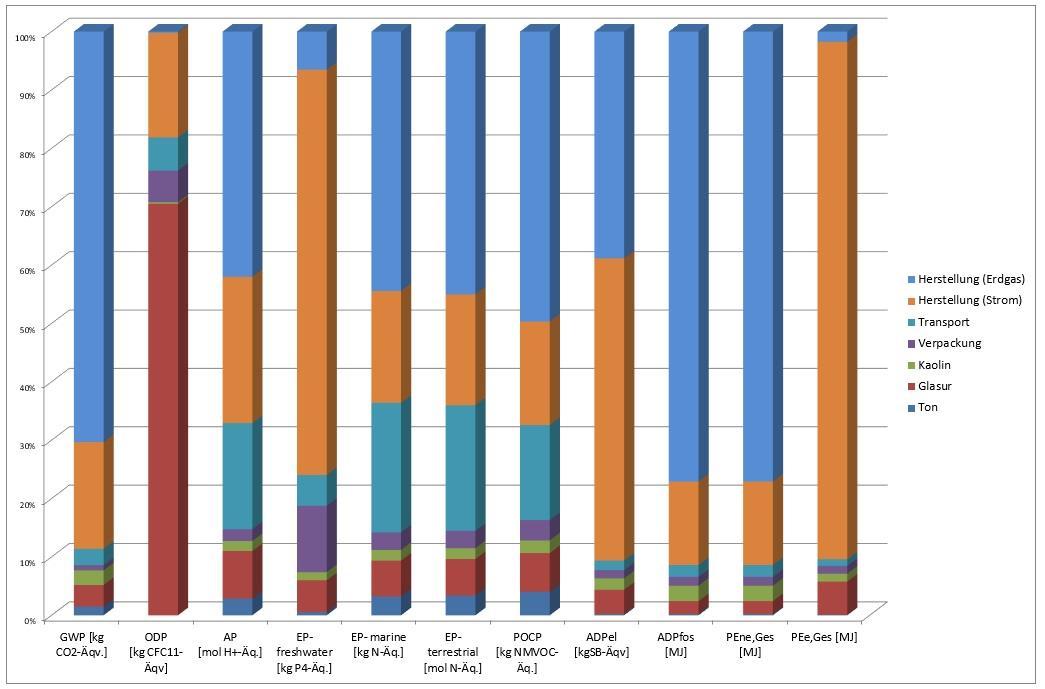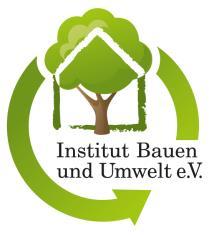translation from German to English[Type here]
in accordance with ISO 14025 and EN 15804+A2
Owner of the Declaration
Bundesverband Keramische Fliesen e.V.
Publisher Institut Bauen und Umwelt e.V. (IBU)
Programme holder Institut Bauen und Umwelt e.V. (IBU)
Declaration number
EPD-BKF-20220184-ICG1-EN
Issue date 15 July 2022
Valid to 14 July 2027 Ceramic tiles and slabs
www.ibu-epd.com | https://epd-online.com
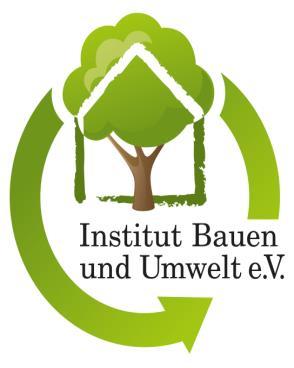
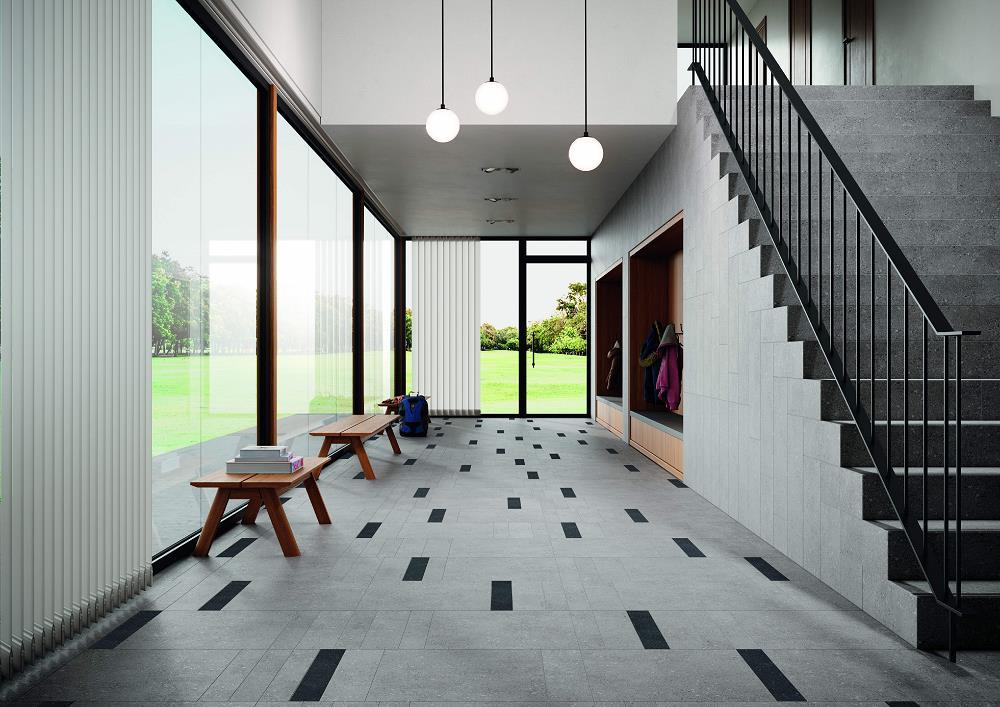
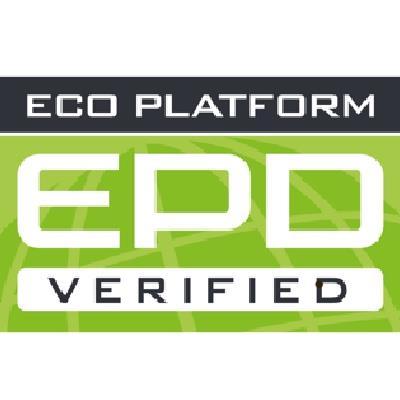


1. General Information
Bundesverband Keramische Fliesen e.V Ceramic tiles
Programme holder
IBU – Institut Bauen und Umwelt e.V. Hegelplatz 1 10117 Berlin Germany
Declaration number
EPD-BKF-20220184-ICG1-EN
This declaration is based on the product category rules:
Ceramic tiles, 11.2017
(PCR tested and approved by the independent Expert Council (SVR))
Issue date 15 July 2022
Valid to 14 July 2027

Dipl.-Ing. Hans Peters (President of Institut Bauen und Umwelt e.V.)

Dr Alexander Röder (Managing Director Institut Bauen und Umwelt e.V.)
2. Product
2.1 Product description / Product definition
Using extrusion processes, dry presses or other processes, ceramic tiles are formed, dried and then fired once or twice in order to develop the desired and requisite characteristics.
The products under review here involve wall and floor tiles in all formats, surface finishes (e.g. glazed and/or coated and unglazed) and colours as well as all defined classification and evaluation groups. Ceramic tiles are generally classified as earthenware, stoneware, porcelain stoneware and split tiles. Earthenware is more porous and has a higher degree of water absorption. It is glazed and largely used in interior applications. Stoneware and porcelain stoneware absorb essentially less water. This makes them more resistant to frost as well as being particularly durable as floor coverings. The situation is similar for split tiles, i.e. extruded products.
Owner of the Declaration Bundesverband Keramische Fliesen e.V Luisenstrasse 44 10117 Berlin Germany
Declared product / Declared unit 1 m² ceramic tiles
Scope:
This document refers to ceramic tiles by the Bundesverband Keramische Fliesen e. V.
The LCA data was recorded in 2020 in member plants of the association.
The LCA is representative for 6 companies and 9 plants in the association which manufacture around 65% of the total domestic production volume.
The owner of the Declaration shall be liable for the underlying information and evidence; the IBU shall not be liable with respect to manufacturer information, Life Cycle Assessment data and evidence.
This EPD was drawn up in accordance with the specifications of the EN 15804+A2. The standard is referred to as EN 15804 hereinafter.
Verification
The EN 15804 European standard serves as the core PCR.
Independent verification of the Declaration and information provided in accordance with ISO 14025:2011
internally x externally

(EU) Directive No. 305/2011 (CPR) applies for placing the product on the market in the EU/EFTA (with the exception of Switzerland). The product requires a Declaration of Performance taking consideration of EN 14411:2012, Ceramic tiles – Definition, classification, characteristics, evaluation of conformity and marking. The respective national regulations apply for usage.
2.2 Application
Ceramic tiles are largely used as wall and floor coverings in interior and exterior applications. Apart from applications in residential areas, such as bathrooms, kitchens, hallways and porches as well as in living rooms and bedrooms, on balconies, patios and in gardens, they are also used in commercial and industrial areas, in public buildings, indoor swimming pools and for facades etc. on account of the


possibilities offered in terms of combining design and durability.
2.3 Technical data
The following section outlines details on product performance in terms of their essential characteristics in accordance with EN 14411, where included and specified in the Declaration of Performance. As no specific values can be provided for the average product declared in this EPD, the requirements are outlined below in accordance with a defined product class.
1. Water absorption
Ceramic tiles are classified in groups I to III with regard to water absorption and design. Water absorption as a mass percentage is > 0.5% to < 10% depending on the group and measured in accordance with ISO 10545-3
2. Breaking load (requirements in accordance with EN 14411): dependant on tile application, classification group and tile thickness:
- Breaking load where tile thickness ≥ 7.5mm: min.
600 – 1,300 N
- Breaking load where tile thickness < 7.5 mm: min. 200 – 600 N
3. Bending strength (requirements in accordance with EN 14411): dependant on tile application and classification group:
- Bending strength: min. 8 – 30 N/mm²
4. Resistance to surface wear
ISO 10545-7 (PEI test): Wear classes II, III, IV and V (see also EN 14411, Annex M)
5. Resistance to alternating freeze and thaw in accordance with ISO 10545-12 where applicable
All other technical structural data in accordance with PCR Part B was not listed as it is not of relevance for the declared product in practice and/or does not correspond with the technical structural characteristics.
Product performance values in line with the Declaration of Performance in terms of its essential characteristics in accordance with EN 14411:2012: Ceramic tiles – Definition, classification, characteristics, evaluation of conformity, marking and national requirements
Voluntary information on the product: dependent on area of application in accordance with EN 16165
2.4 Delivery status
Depending on the respective area of application, ceramic tiles are manufactured and supplied in various formats, thicknesses, colours and décors (glazed or unglazed). Quality features in terms of dimensions and surface finish in accordance with ISO 10545-2
2.5 Base materials / Ancillary materials
Ceramic tiles and slabs are manufactured from a mixture of raw materials consisting of the following essential components:
• Clays approx. 45-60%
• Feldspar approx. 25%
• Kaolin approx. 7%
• Limestone approx. 3%
• Sand approx. 3%
• Glaze/Coating approx. 4%
Clay/Kaolin:
Natural earths of varying natural mineral composition. Materials are quarried close to the surface in selected natural mineral deposits.
Sand / Powdered limestone: added as leaning agents for offsetting the natural fluctuations in the mineralogical composition of the raw clay for very plastic (fine-grain) clays.
Other natural clay components:
Clays contain natural constituents deposited due to the earth’s history in varying proportions, e.g. iron oxides that give colour, which is why yellowish to dark red firing colours can occur depending on the clay deposit.
Dyes:
depending on the natural raw material composition, dyes are added to the masses to be produced, e.g. coloured spinels such as iron oxide Fe3O4 (magnetite). During the firing process, these colour additives lead to the requisite reactions and ultimately the desired colours.
Glazes:
containing clay, feldspar and glass frits, for example. Glass frits arise when glass powder is heated until the particles evaporate and condense but without the entire mixtures becoming viscous. The goal is to achieve a mass of similar components and to convert water-soluble components contained into insoluble compounds.
The product / At least one partial product contains substances from the ECHA list of candidates of substances of very high concern (SVHC) (dated 20 December 2018) exceeding 0.1 percentage by mass: no
The product / At least one partial product contains other CMR substances in categories 1A or 1B which are not on the candidate list, exceeding 0.1% by mass in at least one partial product: no
Biocide products were added to this construction product or it has been treated with biocide products (this then concerns a treated product as defined by the (EU) Ordinance on Biocide Products No. 528/2012): no
2.6 Manufacturing
The manufacturing process for ceramic tiles is broken down into various process steps such as preparing the base materials, shaping, drying, glazing where necessary and firing the tile blanks. Clay, kaolin, quartz and feldspar serve as ceramic raw materials. These are crushed and ground, weighed by formula, mixed with water in a mixer and homogenised (ceramic mass).
A distinction is made between two different shaping processes: In the so-called dry press process, the raw material mass is pressed into the future tile mould as granulate; extrusion pressing involves pressing the pulpy raw material mass through the mould templates. The shaped blanks are then dried and fired with or without a glaze. After firing, the tiles are sorted and packed for shipping.


Manufacturing process for ceramic tiles (glazed):
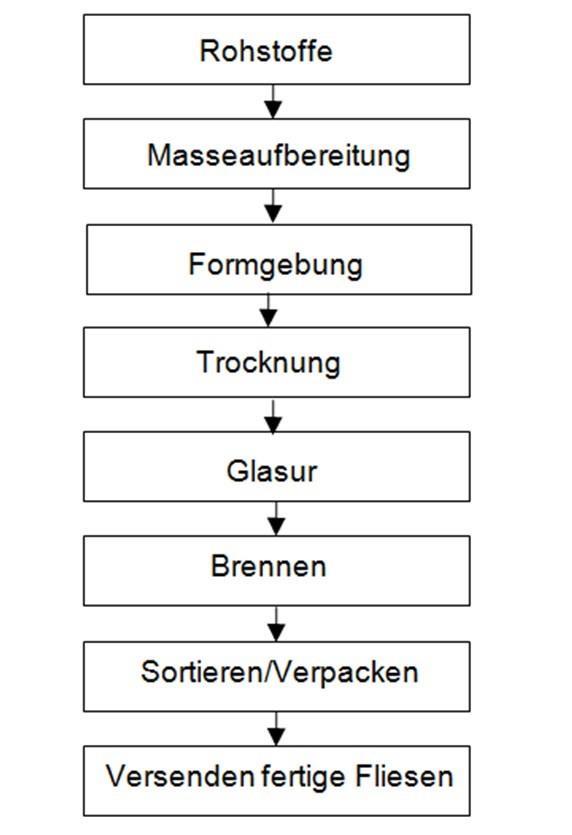
[Legend:]
Rohstoffe Raw materials Masseaufbereitung Mass preparation Formgebung Forming Trocknung Drying Glasur Glaze Brennen Firing
Sortieren/Verpacken Sorting/Packing Versenden fertige Fliesen Shipping the finished tiles
The manufacturers are subject to initial, internal and external monitoring in accordance with the Construction Products Regulation ((EU) Regulation No. 305/2011).
Internal monitoring is performed on the basis of a quality management system (QMS) in accordance with or based on EN 14411, ISO 9001 and ISO 50001
External monitoring is performed by independent certification agencies (notified bodies).
2.7 Health and environment factors during manufacturing
The tile manufacturers subject to this EPD carry out environmental control systems (e.g. EMAS).
Health and safety and industrial safety are attributed a high degree of attention. The occupational limit values are significantly fallen short of. No more extensive measures are required based on production conditions.
Water/Soil:
No contamination of water or soil. In most of the plants reviewed, the process is free of waste water. The mixing water used is released as water vapour during the drying process and redirected into the internal water circuit where it is reused.
Air:
Natural gas is used in the firing process. The emissions from the firing process are below the stringent limit values of the TA Luft (Technical Instructions on Air Quality Control). Environmental protection measures are aligned towards as low energy consumption as possible and low-emission waste air.
2.8 Product processing/Installation
Tiles can be glued using tile adhesive or laid in a mortar bed.
The weights of individual elements are below the recommendations of the professional liability association.
When processing the tiles, industrial protection measures must be adhered to in accordance with the rules of the professional liability associations and manufacturer recommendations. Cutting work generally involves specified wet processes.
Leftover tiles are collected separately and recycled.
2.9 Packaging
Packaging materials incurred on the building site are redirected into the economic cycle as recycled products.
Packaging materials such as cardboard (EWC 15 00 01), polyethylene foil and strips (both EWC 15 00 02) are collected separately and redirected into the economic cycle by the VfW (Vereinigung für Wertstoffrecycling) or comparable organisations as recycled products, or utilised energetically. Wooden pallets (EWC 15 00 03) are taken back by the building trade (reusable pallets remunerated in the German deposit system) which returns them to the manufacturing plants.
2.10 Condition of use
The components of ceramic tiles are bound as solid substances in the use stage thanks to the sintering process at high temperatures (ceramic compound).
2.11 Environment and health during use
Ceramic tiles do not emit any substances which are hazardous to health or the environment, are free of VOC as well as being neutral in terms of indoor air.
2.12 Reference service life
The reference service life for ceramic tiles is generally significantly longer than 50 years, confirmed by the list of useful lives for components issued by the BNB (BNB 2017). Standard use extends to 80 to 150 years and more in some cases.
A reference service life according to ISO 15686 is not indicated.
2.13
Fire
Extraordinary loads
Ceramic tiles are not flammable. In the event of a fire, no toxic gases and vapours arise which impair visibility. The products fulfil the requirements of EN 14411 and are classified as Class A (non-combustible) in accordance with EN 13501-1 (see 96/603 EC).


Water
Ceramic tiles are suitable for lining drinking water containers (e.g. water supply). Hazards caused by water can be excluded.
Mechanical destruction
If the coating layer displays a hole or indent, it can be repaired using the appropriate hard waxes or similar and individual tiles can be easily replaced where they display more extensive damage. Damaged tiles are not associated with any pollution for the environment or persons.
2.14 Reuse phase
Depending on the quantity and material, tiles can be reused in line with their original application when buildings are de-constructed in a targeted manner. Likewise, tiles can remain on the surface and be glued over. Single-variety element residue can be taken back by fireclay manufacturers and reused in ground form as leaning agents in production. This practice has
3. LCA: Calculation rules
3.1
Declared unit
The Declaration is based on the production of 1 m² average ceramic tiles. The LCD results in this EPD are based on averages provided by all German plants which are, in turn, weighted averages based on the percentage of total annual production accounted for by the individual production facilities, and the conversion factors indicated in the table.
Declared
3.2
System boundary
The following life cycle phases are considered: product stage, construction of the building structure, use stage, end-of-life stage, benefits and loads beyond the system boundaries.
The EPD system boundaries follow the modular approach outlined in the EN 15804. The declared modules are outlined briefly below.
Type of EPD: “Cradle to gate - with options
Modules A1 to A3 comprise the manufacturing phase:
• A1 Raw material supply and processing and poss. finishing processes for secondary materials serving as input (e.g. recycling processes)
• A2 Transport to manufacturer
• A3 Production, emissions
Module A4 includes transport to the customer and/or construction site. This data is also collected in the plants and refers to domestic transport.
Module A5 contains packaging disposal. This EPD exclusively analyses the influence of plastic and paper packaging disposal including transporting packaging for disposal. Thermal processing in a plant with R1> 0.6 is assumed for the packaging (with the exception of paper/cardboard). The loads from the incineration process are declared in Module A5, the resulting
been applied with broken product for decades. The possibilities of further use involve as aggregates for crushed brick concrete, as filling or bulk material in the area of road-making and civil engineering.
2.15 Disposal
Where the recycling options indicated above are not practical, element residue, broken product and product residue incurred on the building site are easy to dispose of and do not pose any risks for the environment.
Waste key: EWC 17 01 17 (tiles and ceramic)
Owing to the chemically neutral, inert and immobile performance of ceramic tiles, they can be stored in class 0 and 1 landfills in accordance with the TA Siedlungsabfall (Technical Guideline on Domestic Waste).
2.16 Further information
Further information is available at www.fliesenverband.de.
credits in Module D. The balancing of the material costs for tile adhesives and grouts as well as the offcuts is omitted, since there are large differences in occurrence depending on application.
Module B1 concerns the use of tiles with regard to emissions into the environment. The module is declared. No indoor emissions presenting a hazard for health can be anticipated when using tiles.
Module B2 includes the expenses associated with cleaning using water and cleaning agents. A typical cleaning cycle must be indicated separately for floor and wall tiles in the EPD. The environmental impact of annual expenses associated with cleaning 1 m² wall tiles is indicated in the LCA. If the sum is divided by 4 (wall tiles cleaned 4 times a year) and then multiplied by the number of cleaning processes per year for floor tiles, the planner can calculate the total impact of cleaning, including concerning floor tiles.
Modules B3 to B5 concern the repair, substitution and full replacement of tiled floors. These modules are considered in the study and declared in the EPD. When installed as designated, no repair, replacement or substitution is necessary.
Modules B6 and B7 are considered in the study and declared in the EPD. There are no environmental impacts here as the product does not require water or electricity in order to work. The expenses associated with cleaning are declared in B2.
The C Modules and Module D refer to analysis of tile disposal following use. The End-of-Life scenario refers to material utilisation as mineral filling materials in the construction industry.
Details on modules concerning subsequent use:
Module C1 includes the expenses associated with deconstruction, primarily diesel consumption by demolition machines.
Module C2 includes transport to the landfill and/or to recycling.


Module C3 comprises processing building materials for later use as mineral bulk goods.
Module C4 involves waste disposal, i.e. disposal in the building rubble landfill.
Module D includes the credit for expenses saved, i.e. savings in primary material and primary energy by using recycled grit and by thermal utilisation of packaging.
Waste impact is considered in the modules in which such waste is incurred.
Machinery, plants and infrastructure required in the manufacturing process are ignored.
3.3
Estimates and assumptions
Data sets are not available for all raw materials or preliminary products in the GaBi 9 database. For some substances, the processes were estimated with preliminary products similar in production and environmental impact. For example, the base material feldspar was substituted with the data set lava. The glaze formula is not usually available to the companies as mostly readymade glazes are procured.
As the formula for these readymade glazes and glaze frits is often a secret, the average composition of the glaze is estimated as outlined below.
Solid information is available on the average components of the glass frits and type of aggregates. Aggregates are considered in even percentages. The glaze recipe used for calculation is depicted in the following table.
Table: Glaze formula
3.4 Cut-off criteria
All data from the operating data survey was taken into consideration, i.e. all starting materials used according
to the formula, the thermal energy used as well as electricity. Accordingly, material and energy flows with a share of less than 1 per cent were also considered. No material flows are neglected which make a significant contribution to environmental impact by the product.
The wear factor of the wooden pallet as well as the machinery, equipment, infrastructure and additives required in production are neglected.
3.5 Background data
Data sets are available in the GaBi 9 database for the base materials used in the corresponding formulae as well as for the provision of energy and all other requisite background data (e.g. waste processing, transport processes). The database was last updated in 2021.
3.6 Data quality
The data quality can be regarded as good. The primary data has been collated carefully; all relevant energy and material flows have been taken into consideration. Both primary and background data refer to data from 2020.
3.7 Period under review
The manufacturing data represents an average over the entire year 2021.
3.8 Allocation
The production process does not produce any byproducts. Accordingly, no allocation is integrated in the software model used.
Product waste used internally is ground and added to the base materials. Some of the product waste is recycled externally. The subsequent processing and recycling steps are not taken into consideration.
3.9 Comparability
As a general rule, EPD data can only be compared or evaluated when all of the data records to be compared have been drawn up in accordance with EN 15804 and the building context and/or product-specific characteristics are taken into consideration.
The background data was taken from the GaBi 9 database 2021, service pack 40.
4. LCA: Scenarios and other technical information
Characteristic product features
Biogenic carbon
The biogenic carbon in packaging accounts for 0.43 kg/CO2 equiv. The mass of the packaging containing biogenic carbon is 0.12 kg.
Transport to construction site (A4)
The average national transport distance calculated in the data survey is declared in this Declaration. Specific transport distances can be derived from this distance.
Construction-installation process (A5)
Designation Value Unit
Output materials following waste treatment on the building site 0.14 kg Auxiliary material tile adhesive and tile grout per m² approx. 3 kg
The volume of product waste during assembly varies depending on the application and is not therefore declared in the EPD. The declared environmental results from A1-A3, A4 and C and D are supplemented by the cut-off rate to enable inclusion of the environmental impact incurred by assembly waste. (Example: a 3% cut-off/breakage rate gives rise to a factor of 1.03 x environmental impact.). The material expenses associated with tile adhesive and grouting mortar are outlined in the Declaration for a typical standard application but are not included in the LCA.


Maintenance (B2)
Designation
Water consumption per cleaning cycle
Value Unit
0.1 48 litres
Ancillary material cleaning agent per cleaning cycle 2 ml
The number of cleaning cycles per year can vary extremely depending on the type of use, e.g. in private areas, in business premises or in hospitals. If the surface is very dirty, additional quantities of cleaning agent may be necessary. Cleaning can be carried using water with or without cleaning agent. Electricity is not required for the cleaning process. It may be possible to remove coarse dirt using a brush.
Scenario for cleaning wall tiles:
A cleaning interval of every 3 months (4 times a year) using the indicated quantities of water and tensides can be regarded as typical.
Scenario for cleaning floor tiles:
A cleaning interval of once a week (52 times a year) using the indicated quantities of water and tensides can be regarded as typical.
Assumptions in accordance with CET PCR 2021
Where hygiene requirements or highly-frequented areas demand more frequent cleaning, the environmental results in B2 can easily be multiplied. The environmental results in section 5 refer to annual cleaning of wall tiles.
Ceramic tiles are exceedingly durable floor coverings. Repair (Module B3), replacement (Module B4) or refurbishment (Module B5) during use remains the exception. The environmental impacts can be ignored (CET PCR 2021).
Reference service life
Name
End of Life (C1-C4)
Designation
Reuse, recovery and recycling potential (D), relevant scenario information
The following scenario can be assumed for Germany:
(Source: Recycling Economy on Building Sites 2018)
Module D includes credits from material recycling of tiles in the form of mineral bulk goods (Module D) and credits from thermal utilisation of the packaging (Module D1).


5. LCA: Results
The following tables contain the results of the LCA in relation to the various life cycle stages. The modules marked ND are also declared in this case but cannot be shown for space reasons. The respective modules are indicated as zero as a result of their non-existent environmental impact. Basic information on all declared modules is supplied in section 4.
Two End-of-Life (C3, C4 and D) scenarios are evaluated: Scenario 1 (D) considers 93.9% recycling with credit of aggregate and landfilling of 6.1%; scenario 2 (D/1) includes credit due to thermal recycling of packaging from Module A5.
DESCRIPTION OF THE SYSTEM BOUNDARIES (X = INCLUDED IN LCA; MND = MODULE NOT DECLARED; MNR = MODULE NOT RELEVANT) Product
EP freshwater [kg P equiv.] 1.06E-5 6.86E-7 7.07E-9 1.39E-9 1.47E-8 4.54E-8 1.02E-7 2.83E-8
EP marine [kg N equiv.] 4.50E-3 1.43E-3
POCP [kg
extracted]
Legend GWP = Global warming potential; ODP = Ozone depletion potential; AP = Acidification potential of soil and water; EP = Eutrophication potential; POCP = Photochemical ozone creation potential; ADPE = Abiotic depletion potential – non-fossil resources (ADP substances); ADPF = Abiotic depletion potential – fossil fuels (ADP fossil fuels); WDP = Water deprivation potential (users)
RESULTS OF THE LCA – INDICATORS TO DESCRIBE RESOURCE USE according to EN 15804+A2: 1 m² ceramic tiles, basis weight: 17.97 kg/m²
Indicator Unit
PENRE [MJ]
PENRM
PENRT [MJ]
SM [kg] 1.02E+0 0.00E+0 0.00E+0 0.00E+0
[MJ]
Legend
PERE = Renewable primary energy as primary energy carrier; PERM = Renewable primary energy resources as material utilisation; PERT = Total use of renewable primary energy resources; PENRE = Non-renewable primary energy as energy carrier; PENRM = Nonrenewable primary energy as material utilisation; PENRT = Total use of non-renewable primary energy resources; SM = Use of secondary materials; RSF = Use of renewable secondary fuels; NRSF = Use of non-renewable secondary fuels; FW = Use of net fresh water
RESULTS OF THE LCA – WASTE CATEGORIES AND OUTPUT FLOWS according to EN 15804+A2: 1 m² ceramic tiles, basis weight: 17.97 kg/m²

[MJ]
Legend HWD = Hazardous waste for disposal; NHWD = Non-hazardous waste for disposal; RWD = Radioactive waste for disposal; CRU = Components for reuse; MFR = Materials for recycling; MER = Materials for energy recovery; EEE = Exported electrical energy; EET = Exported thermal energy
LCA RESULTS – Additional impact categories acc. to EN 15804+A2 - optional 1
ceramic tiles, basis weight: 17.97 kg/m² Indicator
[cases of illness]
[kBq U235 equiv.]
[CTUe]
[CTUh]
[CTUh]
Legend PM = Potential incidence of disease due to particulate matter emissions; IR = Potential effect from human exposure to U235; ETP fw = Potential toxicity comparison unit for ecosystems; HTP c = Potential toxicity comparison unit for humans (carcinogenic effect); HTP nc = Potential toxicity comparison unit for humans (non-carcinogenic effect); SQP = Potential soil quality index


